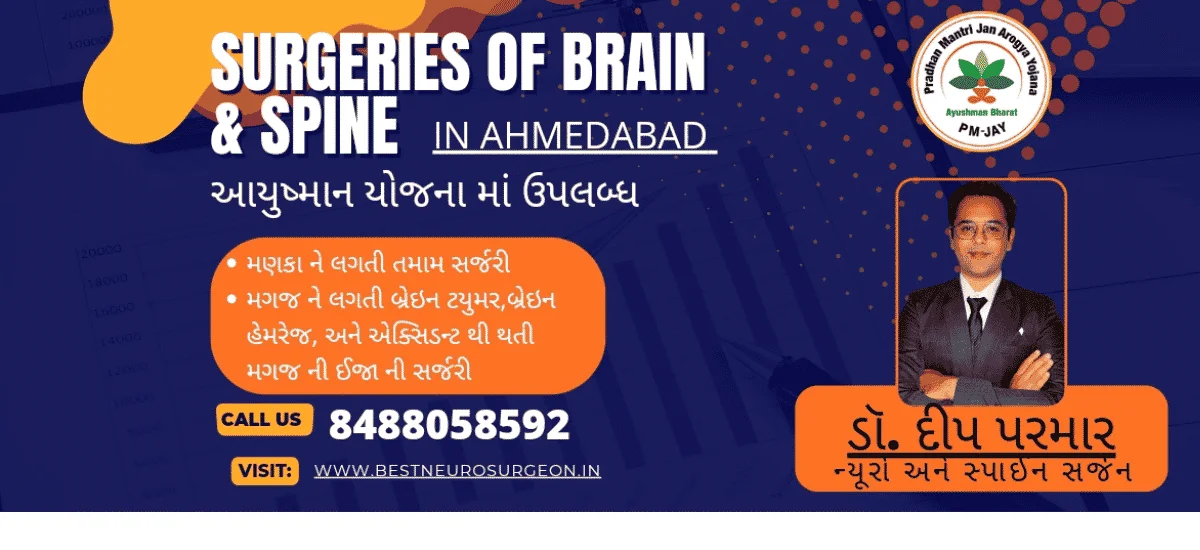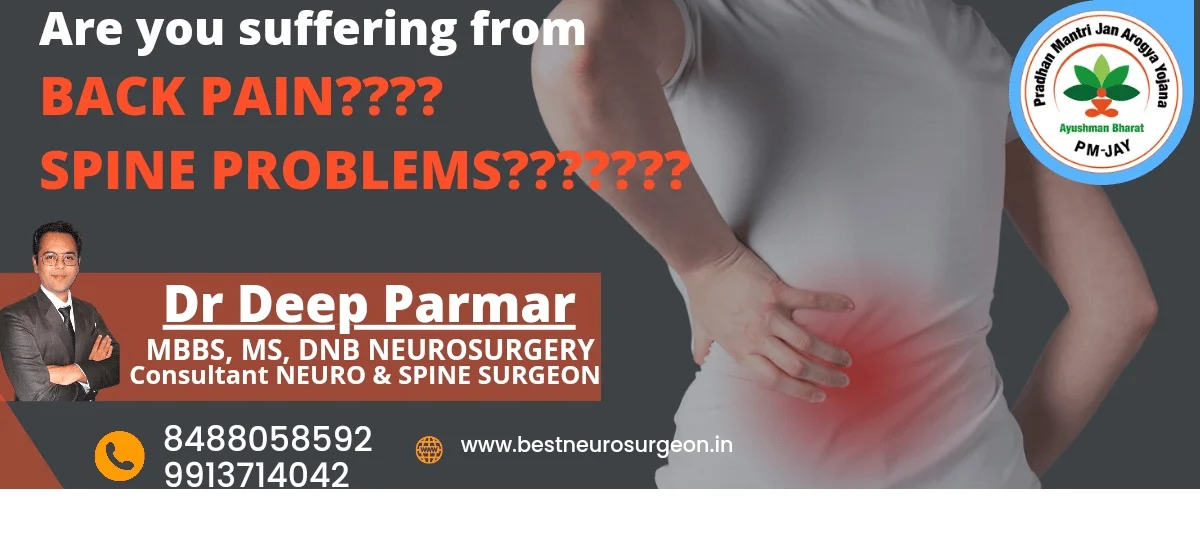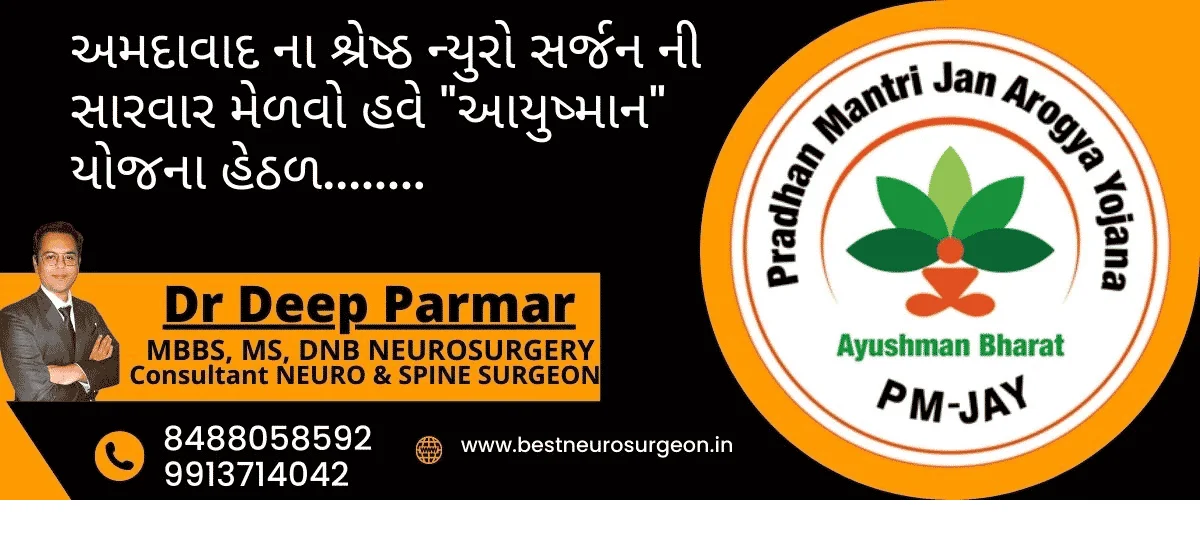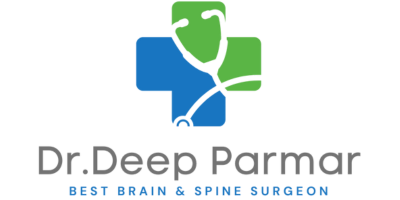


The 33 vertebrae that make up the vertebral column, or backbone, are separated from one another by spongy discs.
There are four sections of the spine:
The four vertebrae that make up the tailbone are also part of the sacral spine’s lowest five vertebrae, which are situated below the waist (coccyx)
Lumbar Discs Become Sick? affects the lower back’s five bony segments that make up the lumbar spine.
Bloated disc. The intervertebral disc may dry up and lose fluid as it ages.
As a result, the spongy disc, which serves as a “shock absorber” and is situated between the bony portions of the spine, is compressed.
The hard outer ring can eventually break down as a result of this. This allows the ring’s interior, or nucleus, to protrude.
(Brain Tumor Specialist Ahmedabad)
The inner nucleus pulposus may burst out from the annulus as the disc continues to degrade or as the spine continues to be stressed.
This is a herniated or burst disc. The nerve roots that are immediately behind the disc space may then be pressed by the disc material pieces.
This may result in discomfort, frailty, numbness, or alterations in feeling.
The lower lumbar spine is where most disc herniations occur, particularly between the fourth and fifth lumbar vertebrae and the fifth lumbar vertebra, and the first sacral vertebra (the L4-5 and L5-S1 levels).
(Best Neurosurgeon Ahmedabad)
An illustration of several skull fracture kinds
The normal disk’s natural structure changes, leading to lumbar disc disease.
The majority of the time, disc illness is brought on by age and the natural breakdown of the disc.
A normal disc may herniate sometimes as a result of a serious injury.
An already herniated disc may get worse as a result of trauma.
(Neurosurgery under ayushman yojna)
Physical inactivity may result in weak back and abdominal muscles, which may not adequately support the spine, even though age is the most prevalent risk factor.
Back injuries can arise in those who engage in excessively demanding activities but are not typically very active.
Back problems may also result from jobs that entail a lot of lifting and spinal twisting.
(Spine surgery under ayushman bharat)
The location of the herniated disc and the nerve root it is pressing on might affect the symptoms of lumbar disc disease.
(Spine Operation under ayushman bharat)
Back discomfort that is ongoing or intermittent.
Moving about, coughing, sneezing, or standing for extended amounts of time may make this worse.
Muscular spasm in the back
Sciatica is a kind of back or buttock discomfort that radiates down the leg, to the calf, or the foot.
Leg muscles are weakened.
Tingling in the foot or leg
Decreased knee or ankle reflexes
Alterations in bowel or bladder function
Lumbar disc disease symptoms might resemble those of other illnesses or disorders.
For a diagnosis, consult your healthcare practitioner at all times.
How are lumbar disc disorders identified?
You could have one or more of the following tests in addition to a thorough medical history and physical examination:
X-ray. A test in which inside organs, bones, and tissues are captured on film using invisible electromagnetic energy beams.
Imaging with magnetic resonance (MRI).
a process that creates precise pictures of the body’s organs and architecture using a mix of big magnets, radiofrequency technology, and a computer.
Myelogram. A method that involves injecting dye into the spinal canal to clearly show the anatomy on X-rays.
Scan using a computed tomography (also called a CT or CAT scan). a kind of imaging that creates axial or horizontal pictures of the body, often known as slices, using X-rays and modern technologies.
Any aspect of the body, including the bones, muscles, fat, and organs, may be seen in great detail on a CT scan.
Compared to regular X-rays, CT scans are more detailed.
Electromyography (EMG).
A test that assesses the electrical activity that occurs when a neuron stimulates a muscle.
What is the treatment for lumbar disc disease?
The initial line of lumbar disc disease treatment is often conservative therapy. One or more of the following may be included in this:
Bed rest
Instruction on good body mechanics (to help decrease the chance of worsening pain or damage to the disk)
Exercise regimens, ultrasonography, massage, and other forms of physical treatment
Weight management
Application of a lumbosacral back support
Drugs that reduce pain and relax the muscles
If none of these remedies work, you could require surgery to have the herniated disc removed. Surgery is performed when completely unconscious.
Your lower back will be cut over the herniated discs location by your surgeon.
To reach the disc, some bone from the back of the spine may need to be removed.
The herniated portion of the disc and any excess loose fragments from the disc space will be surgically removed by your surgeon.
Your ability to move about after surgery can be limited while you recuperate to avoid another disc herniation.
Any limitations will be discussed with you by your surgeon.
What side effects might lumbar disc disease have?
Back and leg discomfort brought on by lumbar disc disease may make regular tasks difficult.
It may result in issues with bowel and bladder control as well as numbness or paralysis in the legs.
Is it possible to avoid lumbar disc disease?
You may reduce your chance of developing lumbar disc disease by eating healthily, exercising often, and adopting excellent posture.
Being affected by lumbar disc disease
Conservative therapy involves persistence, but following your treatment plan may lessen back discomfort and prevent the possibility of further deterioration or disc injury.
Both surgical procedures and conservative methods might take time to take effect.
When should I make a call to my doctor?
If your discomfort worsens or you begin to have bowel or bladder issues, contact your healthcare professional right away.
Important information about lumbar disc disease
When a disc in the low back region of the spine bulges or herniates from between the bony portion of the spine, lumbar disc disease may result.
Lower back, leg, and weakening discomfort brought on by lumbar disc disease are exacerbated by movement and activities.
Reducing discomfort and the chance of future spine damage are the initial steps in therapy.
If the more conservative treatment is ineffective, surgery could be considered.
Home care
A bulging disk’s minor discomfort may be reduced with over-the-counter analgesics.
Strengthening the muscles around the disc and enhancing mobility may be achieved with the use of physical therapy and exercises.
Depending on where the bulging disc is, a doctor or physical therapist may assist in helping a person choose safe workouts.
They might advise doing yoga or going for a stroll as light exercises.
Stretches for the legs, back, and neck might also be tried at home to relieve discomfort.
To ease the strain on the vertebrae, an individual may also need to achieve or maintain modest body weight.
Another way to treat a bulging disc is by stabilizing the spine using safety gear.
One may check if the lumbar support in their desk chair is suitable, for instance.
Name of Neurosurgeon: DR DEEP PARMAR
CONTACT: 8488058592/9913714042
WEBSITE: www.bestneurosurgeon.in
Hospital address:
1) KHYATI MULTI-SPECIALITY HOSPITAL, OPP RAJAPTH CLUB, AHMEDABAD, 380015
2) LIFELINE MULTI SPECIALITY HOSPITAL, VANDEMATARAM ROAD, GOTA, 382481

Hospital address:
LIFELINE MULTI SPECIALITY HOSPITAL, VANDEMATARAM ROAD, GOTA, 382481
Copyright © 2018-24 Dr. Deep Parmar